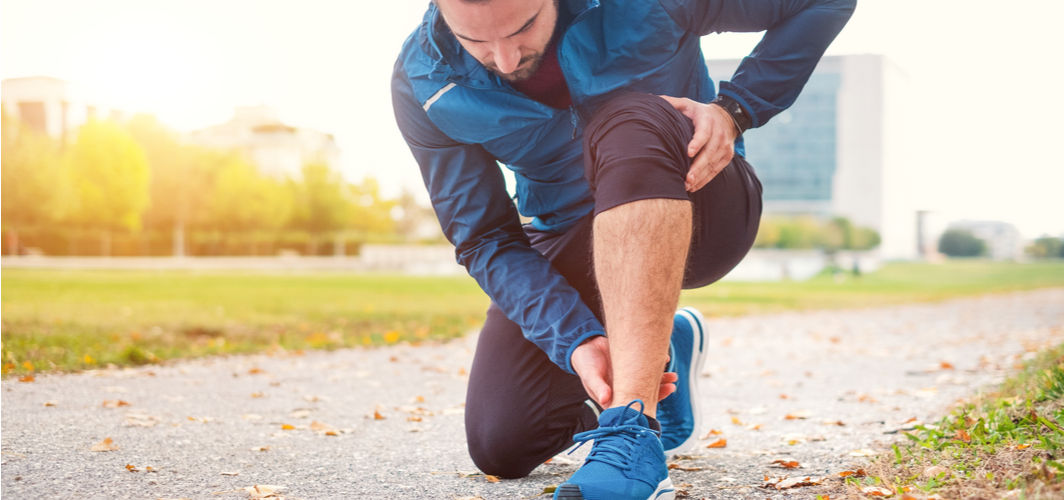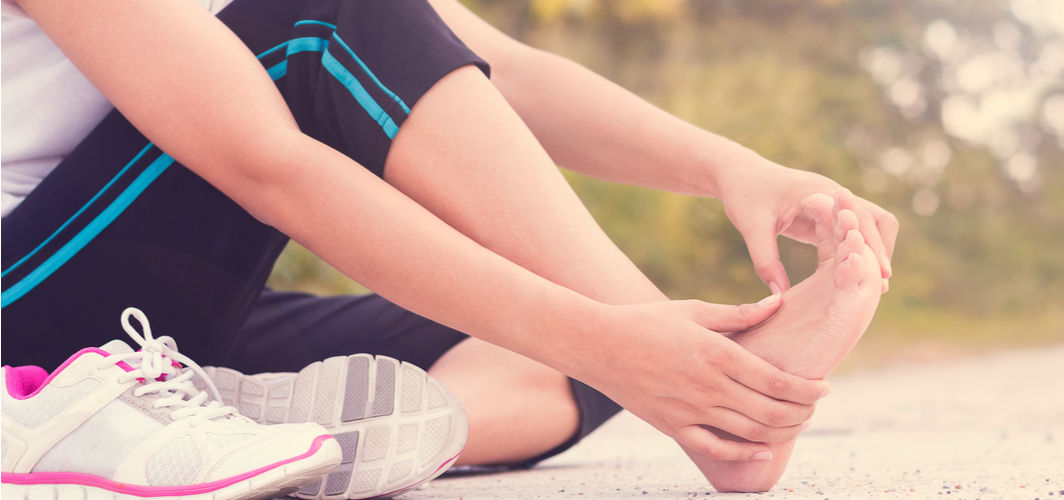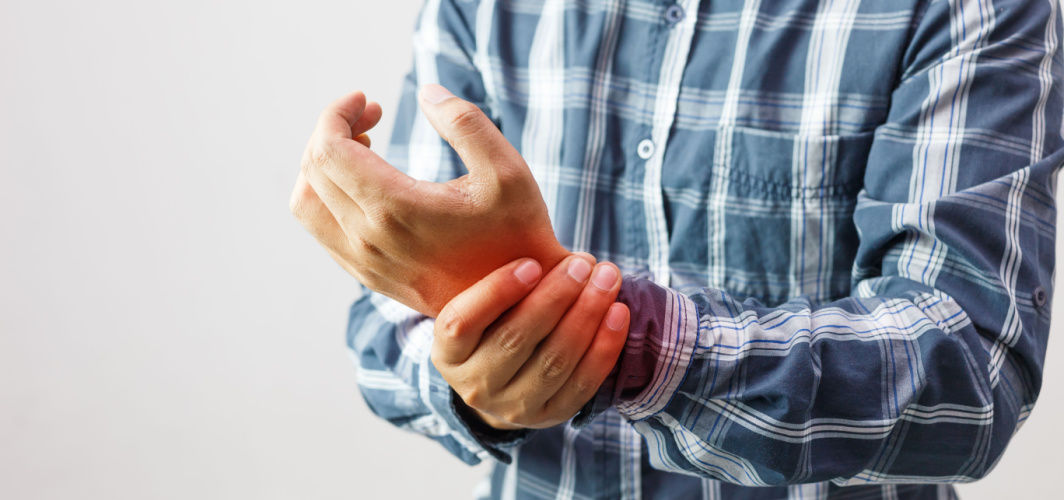Orthopedic Conditions
Gout: Causes, Diagnosis, and Management of This Severe Form of Arthritis
5 min read
By Apollo 24/7, Published on - 31 May 2021, Updated on - 18 October 2022
Share this article
0
45 likes

Gout is a complex form of inflammatory arthritis accompanied by sharp pain, redness, swelling, and stiffness in the joints. People affected are known to have bouts of gout attacks that mainly affect the big toe, knee, and ankle joints. Research is suggestive that men are more prone to gouts than women. However, it has been observed that post-menopausal women are more susceptible to gouts, experiencing worse symptoms than men. Among all forms of arthritis, gout is better controlled if diagnosed and treated early.
What causes gout?
Excess production of uric acid can lead to a build-up of uric acid crystals (monosodium urate) in the joints and tissues in the body, causing gouts. The body naturally produces uric acid by breaking purines down from the food we eat. Deposition of uric acid crystals causes intense pain in the joints, which may last for few hours to few days. Genetic predisposition (or genetic susceptibility) is thought to increase the likelihood of developing gout, along with other factors which include:
- Obesity
- Consumption of alcohol
- Use of certain medications (e.g. diuretics)
- Consumption of beverages and foods that contain a high amount of fructose
- Eating purine-rich foods (e.g. red meat)
- Health conditions (e.g. diabetes, hypertension, poor kidney function, etc.).
The link between gout and kidney health
High levels of uric acid in the bloodstream, also known as hyperuricemia, can affect the joints and the kidneys. Research suggests that hyperuricemia can happen if the kidneys do not function properly but may not always cause gouts. Studies are also suggestive that uric acid crystals can damage the kidney cells leading to chronic kidney diseases.
Diagnosis of gout
Doctors diagnose gout based on the symptoms and site of the affected joints, usually when gout flare-ups happen. However, specific tests are done to confirm gouts which include:
- Blood tests: Blood tests can help determine the level of uric acid in the blood. However, some people can have gout with all symptoms without having high levels of uric acid present in the bloodstream.
- Other blood tests: Basic metabolic panel (BMP) and Rheumatoid factor (RF), antinuclear antibody (ANA), and synovial fluid culture are done to rule out other forms of arthritis, which include septic arthritis too.
- Joint fluid test: Fluid is drawn from the affected area to check for uric acid (needle-like) crystals that may be visible under a microscope.
- X-rays: X-rays can be highly beneficial in detecting and differentiating between gout and other joint diseases. It can help the doctor see uric acid deposits along with damage caused due to gouty arthritis.
- Ultrasound: Ultrasound and MRI imaging tests help in detecting all forms of arthritis. However, in gouts and rheumatoid arthritis, ultrasound is more preferred than MRI by doctors. This is because the monosodium urate crystals are more echogenic when an ultrasound is done. It helps the doctor differentiate between gout and pseudogout based on the location and characteristics of crystal deposits.
Gout treatment
The treatment plan for gout aims to control inflammations and pain during gout attacks. It may also aim at lowering the uric acid levels in the body. This is mainly done to prevent future attacks, joint and kidney damage. Non-steroidal anti-inflammatory drugs (NSAIDs) such as ibuprofen and naproxen are generally prescribed to treat acute gout attacks. They help to reduce the pain and inflammations. However, if the pain, redness, and inflammation do not subside, medicines such as colchicine are given. It has been observed that oral colchicine and NSAIDs act within the first 12 hours of a gout attack. They may be further prescribed in small doses to prevent future episodes.
How to manage gouts and improve the quality of life
Gout can affect a person’s quality of life by hampering their work, fitness regimes, and leisure activities. However, one can effectively manage gout and improve their quality of life by:
- Drinking plenty of fluids: Drinking fluids helps to flush out uric acid from the body, thereby preventing gout attacks and kidney damage. Drinking at least eight glasses of water daily is advisable. Additionally, drinking other beverages such as fruit juice, buttermilk, detox drinks, green tea, and coffee are known to lower the rate at which uric acid is produced in the body.
- Eating a healthy diet: Eating a healthy diet comprising low carbohydrates, low-fat dairy products, lean proteins, fruits, vegetables, and minimally processed foods is known to keep gout in check. Most importantly, avoid purine-rich foods such as red meat, organ meat, and seafood.
- Staying physically active: Staying physically active is an integral part of gout management. One must get involved in activities that will help one overcome pain and gout flare-ups. Experts hint that low-intensity workouts such as walking, swimming, yoga, and cycling, stair climbing at home can help manage gouty arthritis while keeping heart and kidney diseases at bay.
- Losing weight: Losing weight can help reduce the pressure on joints and relieve pain effectively. Detox diets and regular physical activity can help in weight management to prevent and manage gout.
- Protecting your joints: People with arthritis must choose exercises and activities that do not aggravate their condition further. Low-intensity workouts such as water aerobics, cycling, light jogging, swimming, slowly lifting weights, and yoga can be taken up.
- Keeping the affected body part elevated: Gout mainly affects the big toe. Hence, if it is inflamed, one can consider elevating the foot with pillows. For working professionals with gout, sitting with a specially designed elevating foot stand is recommended to manage pain and inflammation.
- Limiting or avoiding alcohol consumption: Research is suggestive that limiting all types of alcohol can lower uric acid levels effectively and help in the prevention and management of gout flare-ups to a large extent, especially in recurrent gout attacks.
Research hints at increased risk of gout due to certain health conditions such as untreated blood pressure, kidney diseases, metabolic disorders, and obesity. Hence, along with uric acid levels, one should keep a check on these conditions too.
Conclusion
Many factors can increase the risk of gout but lifestyle changes, avoiding certain foods, and the use of non-steroidal anti-inflammatory medications can minimize episodes of gouts. Also, early detection, knowledge about the condition, and correct guidance from a rheumatologist can help people with gout improve their quality of life.
Orthopedic Conditions
Leave Comment
Recommended for you

Orthopedic Conditions
Common Foot Problems That Cause Discomfort and Pain
Foot problems are commonly caused by poorly fitting shoes, spending more time on the feet, overuse like excessive walking or running, and fractures, sprains, or trauma.

Orthopedic Conditions
Stress Fracture: Causes and Self-care Measures
Stress fractures are common injuries associated with overuse and inadequate recovery time. The key to prevention is education and risk factor modification.

Orthopedic Conditions
Rheumatoid Arthritis (RA): Symptoms, Risk Factors, Diagnosis, Treatment & Complications
Rheumatoid arthritis (RA) is an autoimmune disease that causes joint pain, swelling, and stiffness. Discover the symptoms, risk factors, diagnostic methods, and potential complications associated with RA for effective management of the chronic health condition.
Subscribe
Sign up for our free Health Library Daily Newsletter
Get doctor-approved health tips, news, and more.
Visual Stories

10 Foods That Are Unhealthy for Your Bones
Tap to continue exploring
Recommended for you

Orthopedic Conditions
Common Foot Problems That Cause Discomfort and Pain
Foot problems are commonly caused by poorly fitting shoes, spending more time on the feet, overuse like excessive walking or running, and fractures, sprains, or trauma.

Orthopedic Conditions
Stress Fracture: Causes and Self-care Measures
Stress fractures are common injuries associated with overuse and inadequate recovery time. The key to prevention is education and risk factor modification.

Orthopedic Conditions
Rheumatoid Arthritis (RA): Symptoms, Risk Factors, Diagnosis, Treatment & Complications
Rheumatoid arthritis (RA) is an autoimmune disease that causes joint pain, swelling, and stiffness. Discover the symptoms, risk factors, diagnostic methods, and potential complications associated with RA for effective management of the chronic health condition.